Beaufort Health and Fitness: 3 Exercise You Should Do Daily
Daily Breathing Exercises to activate your Parasympathetic
Specific Exercise Breathing Techniques that you can do on a daily basis (Recommended in a Morning, Afternoon or Dinner right before you eat). This breathing technique will activate your Parasympathetic Nervous System. Once its activating, were activating the rest and digest part of your system which will help you digest your food better, relax the body, bring the stress level down so cortisol levels will go down and this is the very important part of the nervous system in the body that gets activated during the day.
Exercise:
Lay down exhale completely and do 10 breaths. Hold it for 3 to 4 seconds and then exhale all the way. (Please see the video). Putting a lot of energy to get it to the lower pelvis, not just in the belly but down to the pelvis breathing deep into the pelvis. If you have not done this before don’t use weight, you can use your hand just to put a little pressure, you’ll have a challenge just getting the breath down into your pelvis because you have not activated those muscles, you haven’t brought air that deep in your stomach in a long time.
So try it out 3 sets a day, 10 reps each time so 10 deep breaths.
Exercise For Your Eyes
Exercise that is extremely powerful not only into your eyes muscles which will help with reading and seeing better but will also dramatically help your brain which will directly improve your movement patterns.
Take 5-10 minutes a day to do this exercises. You will see dramatic improvement in your eyes and dramatic improvement in your neurology, the way your brain functions and your movement patterns.
Exercise:
1. Put your thumbs up. One thumb off to the left up to the left and then down to the left and then keep your head up and you’re going to look down at your thumb and then back up and reset look forward in between. (Please see the video) Do 4 sets, try to minimize the head movement and just use your eyes. Switch sides, same thing look down and then up.
2. Arms on the side look forward and then look to the left, look forward again and look to the right. Try to focus and if you need to, bring your hands further a little bit more and then repeat. Do 4 reps. Think about how your brain feels, how your eye feels.
3. The next one we’re going to do, snub all the way up in the air, head straight. Look up in your thumb make sure it’s in the line of vision and we’re going to do a big circle all the way around and then to the other side. (Please see the video) You can do that twice.
4. Thumb straight in front of you and then bring it in. Focusing on the thumb as it comes in close and then bringing it out and repeat. 3 reps.
Those few exercises you can do upon awakening. It will actually awaken your mind up right away. When your eye looks into certain areas it goes into certain compartments of your mind, and instantly it will awake your brain up and will access parts of those brain that have maybe not been functioning properly or you haven’t been using in a long time. That will access those parts of the brain instantly and will help you move better as well as helping your eyes.
Full body Mobility drills (EarthFIT Personal Training)
Mobility exercises that will increase proprioception. So essentially what’s that gonna do is make you feel safer in your environment. And also, it will reduce pain. If you do something like this – even 5-10 minutes a day, it would literally change your entire life. You’ll have more awareness in space, you’ll increase your visual perception and you’ll also increase your breathing, which will reduce stress and threat to the body and allow your life to become better. So I’m gonna take you to every joint and we are going to do movements to every joint and it’s going to loosen the whole body. One thing I want you to do while you’re doing this is belly breathing. So breathing in and out through your belly. Here we go, we’re gonna get started and follow me through we are going to get about 3 to 5 repetitions of each exercise.
Alright, here we go!
1. The neck
-Forward and backwards (3-5 reps)
-Turn side to side (3-5 reps)
-Lateral (3-5 reps)
-Turn, look down and across, each time try to move into a good stretch
-Look across, up and over, when you look up and across try to push your head up to the top and feel a good stretch all down your neck.
2. Shoulder Rotations
-Rolling your shoulders forward and backwards
-Shoulders up, full rotation
-1 arm, look at your fingertips, 3 rotations backwards and forward
-Circle up in the air and then go bigger and bigger
-Figure 8s: forward figure 8, look all the way back behind you and across the body. Change directions, think about the joint
-Switch arms, same Shoulder Rotation exercises
-Both arms: Forward big circles all the way around (3-4), then the backward direction. Cross the body raising your arms up each time and a little bit more
-Arms crossing the body, open up with palms facing forward and then crossing the body and, bring up a little bit higher
3. Chest
-Suck the chest in and out, push in and out
-Circle around, chest in and out
-Circle the elbows
-Wrist, bring the hands in and then out the other way loosen up the wrist,
-Reach to the ceiling as high as you can (3 reps)
4. Hips
-Tilt pelvis back and forth
-Side to side
-Combine two movements, tilt the body back and forth then switch back the other side (like a gyration).
-Rock the body down to the side (looks like your entire torso is forming a circle). And rotate. If you’re dealing with back pain you may need to avoid this one.
4b. Hips
-Do small circle and each time getting bigger and bigger, forward circles and then move backwards (3 circles at least). The knee is slightly bent
-Figure 8, changing directions
-Switch legs, same exercise
-Lateral movement, same with other side
5. Knees
-Knee wag back and forth and then do circles on the knee, same thing on other leg
6. Ankles
-Step on 1 foot, press down (toes pointed down), turn the foot inward and turn the foot outward
-Switch legs, same exercise
-Circles with the toe (3 circles), then back with the other direction
-Figure 8 with the toes
-Switch, same exercise
So there you have it! That’s total mobility from head to toe. You just loosened up your whole body. So that’s perfect, the next thing you can do is a dynamic warm up before your workout, but if you just do this on a daily basis you will have better connection (mind body connection) with your body, you’ll reduce injury, you’ll increase performance and increase total body awareness, if you can tell, I’m slightly breathing a little bit heavier. You should focus on your breathing in the training. I was speaking so it’s hard for me to focus but while you are doing those movements, you should be going <INHALE> <EXHALE>… you’re gonna get more oxygen to the body and therefore increase performance, get more oxygen into the lungs – and going to feel better.
Alright, so this is Ian Hart with EarthFIT training. There you go, that’s mobility exercises from head to toe. Go ahead and do that 5-10 minutes a day and you’re gonna see how it changes your life and your performance.
Ian Hart is a Body-Mind Transformation expert, the creator of EarthFIT Training Systems, co-creator of BACK PAIN RELIEF4LIFE, author of HEALING HACKS, and founder of BEAUFORTPERSONALTRAINING.COM and MYBACKPAINCOACH.COM. Ian and his team help people get into optimal shape in the safest, fastest and most effective way possible, using cutting edge science.
Never Skip Leg Day (New Research)
Hey EF Fam,
If you are already an EFer, then you know every day at EarthFIT is leg day and there is a method to our madness based on science and research for exercise programming that give maximum results to both the body and the mind in the safest, fastest and most effective way possible.
Here is the latest research on how skipping leg day impacts your genes, mitochondria and neurological health.
It is a quick read and I think you will find it interesting.
When you skip leg day, it is pretty serious.
So my recommendation is not to do it 🙂
Committed to your success,
Ian
Ian Hart is a Body-Mind Transformation expert, the creator of EarthFIT Training Systems, co-creator of BACK PAIN RELIEF4LIFE, and founder of BEAUFORTPERSONALTRAINING.COM and MYBACKPAINCOACH.COM. Ian and his team help people get into optimal shape in the safest, fastest and most effective way possible, using cutting edge science.
Beaufort Exercise: What’s Your Excuse?
Beaufort Exercise: What’s Your Excuse?
Hey EF Fam,
Have you ever felt unmotivated, uninspired or have you ever gone through some type of crisis and you weren’t sure how your were going to get out or make it through?
Well… I filmed Dr. Sean Stephenson on Facebook live giving a presentation called “What’s Your Excuse”.
Dr. Sean is 39 and about 2 feet tall and his parents were told he wouldn’t live more than 24 hours when he was born.
Today he is therapist and helps thousands if not millions of people all around the world to be inspired and over come hardship.
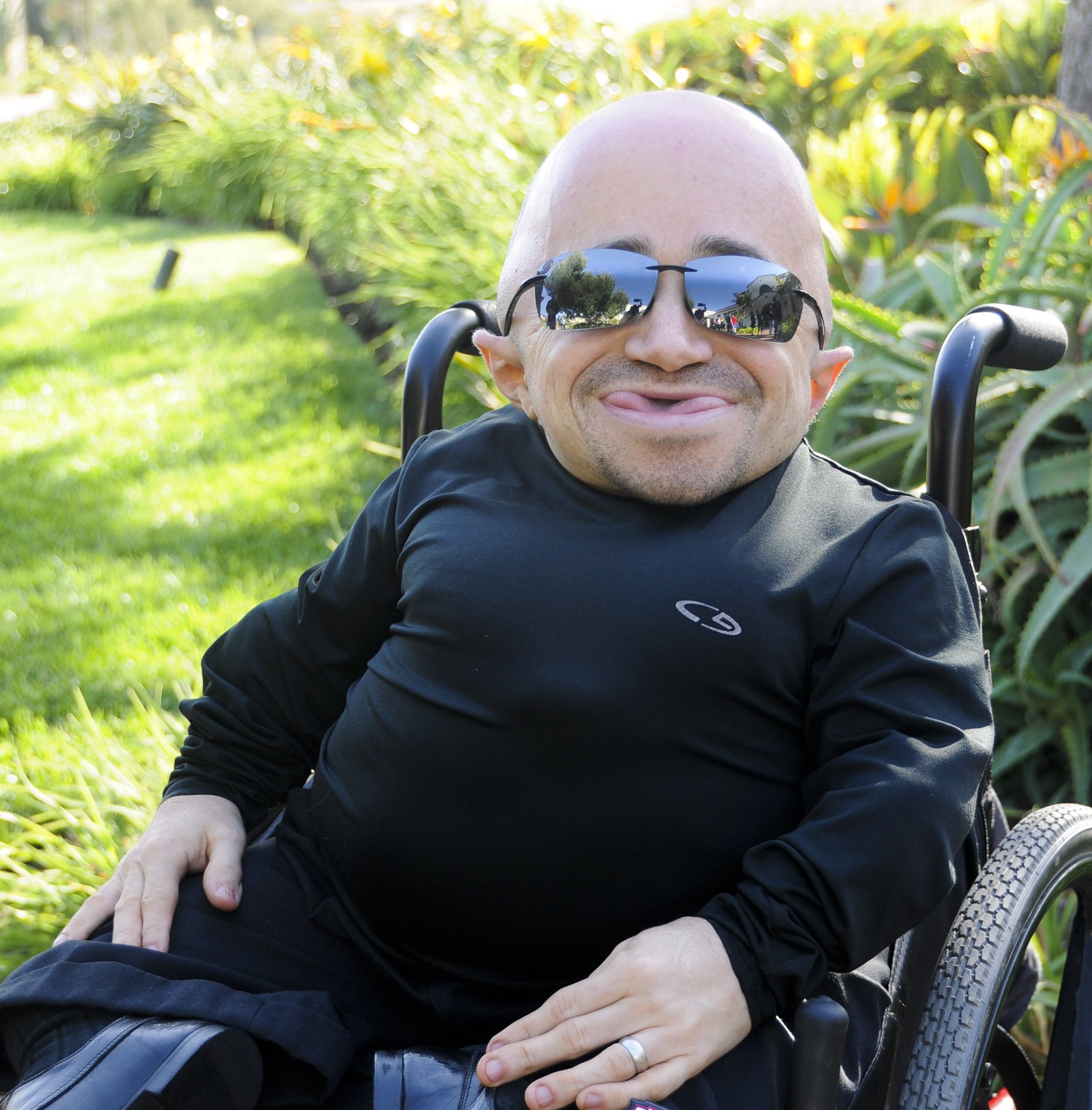
In this video you will no longer have an excuse to not work out 🙂
Also… at the end of the video he gives his top 3 tips for overcoming a crisis.
Committed to your success,
Ian
Ian Hart is a Body-Mind Transformation expert, the creator of EarthFIT Training Systems, co-creator of BACK PAIN RELIEF4LIFE, author of HEALING HACKS, and founder of BEAUFORTPERSONALTRAINING.COM and MYBACKPAINCOACH.COM. Ian and his team help people get into optimal shape in the safest, fastest and most effective way possible, using cutting edge science.
Beaufort Personal Training: Push up
Beaufort Personal Training: Push up
“The first movement that we talked about was the squat. Now I’m going into go into the second movement and once you start to learn how the body moves you will understand how to put these exercise in specific orders, but the first movement that we talked about was the squat, so we talked about sitting back on the heels, keeping the body straight, squatting properly. Now, the second movement I’m going to go into is a push up, and a push up is a pressing motion, so you could also do the reverse of that which would be on a bench pressing up. It’s a different modalities, there’s different aspects to it. Before someone does a press they should learn how to do a push up, and so let me explain what a push up is and how to do it.
First off, before you actually do a push up on the floor, you need to have the strength to be able to lift about 70% of your body, because when you get in this position, you are lifting roughly about 70% of your body so when I go down and I press up my chest and the muscles supporting it, the synergistic muscles have to have the force, the strength, to be able to move 70% of my body weight. If I can’t, the best option is to do it on an incline so you might have seen somebody doing wall push ups so where they are actually on the wall in a slight incline right like this (please see the video) where they get their body on an angle and then they do push ups. So, what you can do in that situation is, for example, put your hands on your bed and this will increase the incline and take the percentage of your body weight off. For example, if you increase 10-15% now you are decreasing the amount of bodyweight that you are using to press up and this is how you get stronger so you start on a high incline and then you start to come down. So you can start on… say your kitchen counter doing push ups 15-20 reps. If you can bang out 3 sets of 15-20 reps very easily then you are able to decrease the incline. So I would suggest about 10% each time you can do this on your stairs, right.
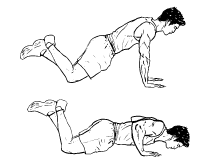
The other option that we have which is not great especially as you know we specialised in back pain relief is doing the knee push ups. Now the knee push ups is in this position but what we find is that most people end up sagging the butt and in this position that’ll be putting a lot of stress on the lower back so as long as it is done properly where the spine is completely straight, we can squeeze the legs together just to make sure we are stable, a lot of people end up crossing – this is not good. We want to press the feet together and then straight up and down and now this is taking a percentage of our body weight off the movement pattern.
So, the key here is that you have core strength. Alright, so the base of support for the push up are your toes touching the ground and your hands touching the ground. Your base of support is whatever touching the surface that is supporting you and the area in between. So, if you notice, in a push up the base of support are my toes and my hands, now everything in between has to stay solid and strong, if I don’t have the core strength I’m going to sink down. And this is where planking comes in, right? I can just stay here, tighten my abs and strengthen myself by doing that, but the back program which we have is what we have people start off on the base level to strengthen the area around the hips, the pelvis, and the lower back.
Once you are strong enough to get in that position, what I would recommend is doing 3 sets of 15 reps of push ups and getting to that point. And then you can start to make things hard on yourself, you can decrease the base support by bringing your feet together, your hands together, you can start to go on to a decline so I can put my feet up say my feet go up on a window seal here. Now I’m slightly declined and now I have more of my body weight that I am pushing up and so then you can start to play with exercises.
So the second exercise that we are talking about here is a pressing motion, specifically a push up. If you are unable to do push ups, you can also do a chest press: that is laying on a bench, you can also do laying on the ground with either two dumbbells or a barbel. It’s the same motion just you have a base of support now on your whole back and it’s not as core intensive.
Alright, so there’s the second exercise – the push up. We’ll go to the next one here in a second.”
Ian Hart is a Body-Mind Transformation expert, the creator of EarthFIT Training Systems, co-creator of BACK PAIN RELIEF4LIFE, and founder of BEAUFORTPERSONALTRAINING.COM and MYBACKPAINCOACH.COM. Ian and his team help people get into optimal shape in the safest, fastest and most effective way possible, using cutting edge science.
Beaufort Personal Training: Row
Beaufort Personal Training: Row
The next exercise that we are talking about is the opposite of a push up, the reason why I say the opposite because there is antagonist and agonist muscles, and they’re the opposing muscle groups. So we did a pushup, now we are going to do the opposite which is a row. Now, doing this back to back is not always the best if you are just starting out because you are going to fatigue the muscles faster because when we talk about each movement, we’re talking about the working phase so when we do a pushup, we are using the chest but on the downward motion we are actually decelerating using our back and then when we come and do a row we are using our back muscles as well. So all these exercises that I’m showing you are the largest muscle groups that we are using in the body, and this is the best way to start of any exercise program unless you’ve been injured, and you need to start even more basic than this. But for the most part everybody can start of with these movements.
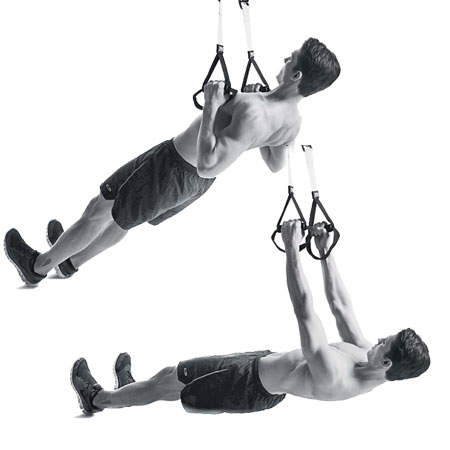
So, the third movement here is a row. We’re starting off: body straight as a boar;, this is a TRX row, again, it doesn’t have to be a TRX. Any tool can be used to do these movements. It just comes down to how much force, muscle force that you want to use to create the intended result. Alright, so the intended result here for me explaining to you is to get you to move correctly, then based on where you want to be you can decide how much weight you need to move, how many reps, how much volume you are doing, how intense you do it…
So when we do a row there’s a few grips that we can use. We have pronated, we have supinated, we have neutral grips (please see the video). So here I’m just showing you neutral grip position, we are going to pull our elbows in 45 degrees, notice my neck and my spine are in alignment and I’m doing a slow controlled movement like I’m bringing a bar to my chest. Say these TRX were stuck together, the handles were stuck together and I was bringing a bar to my chest and going back.
This exercise is very basic, very simple. You can incorporate 2 of the exercises that we’ve just talked about, so let’s go over that. The first exercise that we talked about is the squat, so now watch this exercise as I incorporate the squat to a row:
- Fall back
- Squat down
- Come up and then row.
Now why would I want to do that? Well, I want to do that for a few reasons.
One, It allows me to go deeper to a squat yet more hip mobility and on top of that if you can see I start to breathe heavier so now this is what we called compound exercises. I started to use my legs, the largest muscle group in the body and my back the second largest muscle group in the body.
So as I do these exercises, my heart has to pump blood to my legs because it’s working and blood to my back so now my cardiovascular starts to activate and I get twice the amount of energy exertion which burns twice the amount of calories and this is where you can start to get an efficient workout. For example, at my facility here (EarthFIT) we do about a 30 minute workout and get better results than most people are doing anywhere, going at like an hour a day because it’s designed specifically for the most efficient, but we have a methodical process for building the person up to this point. So someone would never come in to our facility and start of with a squat to a row because we want to make sure that they’ve done numerous reps of the row and they’re proficient at it.
They might do a wide grip row one day, they might do a close grip row the other day, they might do supinated and they might do pronated. Until they’re proficient at that and they can go even further right now we spoke about the pushup when I’m on the floor Im doing about 70% of my weight. Well, as I move forward I’m now lifting more and more of my own body weight to get this row so, if I go parallel I’m almost lifting my full body weight right now. So I weigh about 180, so I’m rowing up at 180. When I come back here, I’m probably using about 60 or 70 lbs now. If I stand up even more really nothing is happening so this is just very basic, this could be a good starting point for someone who’s very weak just to get the thoracic spine and the scapular moving, those shoulder blades moving, and then continue to move forward and start to increase your strength that way.
TRX is a great tool because you can take it anywhere but you can use the cable row machine which are typically at every gym, but those are mainly the two main tools you’re going to see, which is a TRX and a cable row. Sometimes you’ll see they have the hammer strength rows where you actually put the weights on it or you can use dumbbells where you’re getting to the deadlift position and a row which is going to leave me into my next video.
Ian Hart is a Body-Mind Transformation expert, the creator of EarthFIT Training Systems, co-creator of BACK PAIN RELIEF4LIFE, and founder of BEAUFORTPERSONALTRAINING.COM and MYBACKPAINCOACH.COM. Ian and his team help people get into optimal shape in the safest, fastest and most effective way possible, using cutting edge science.
Beaufort Personal Training: The deadlift
Beaufort Personal Training: The deadlift
This is another movement that is can be a little bit complicated for people because of how they’ve been moving for years previously, but the deadlift is essentially how you should be picking up everything off the floor. What deadlift means is that you are picking up dead weight from the floor.
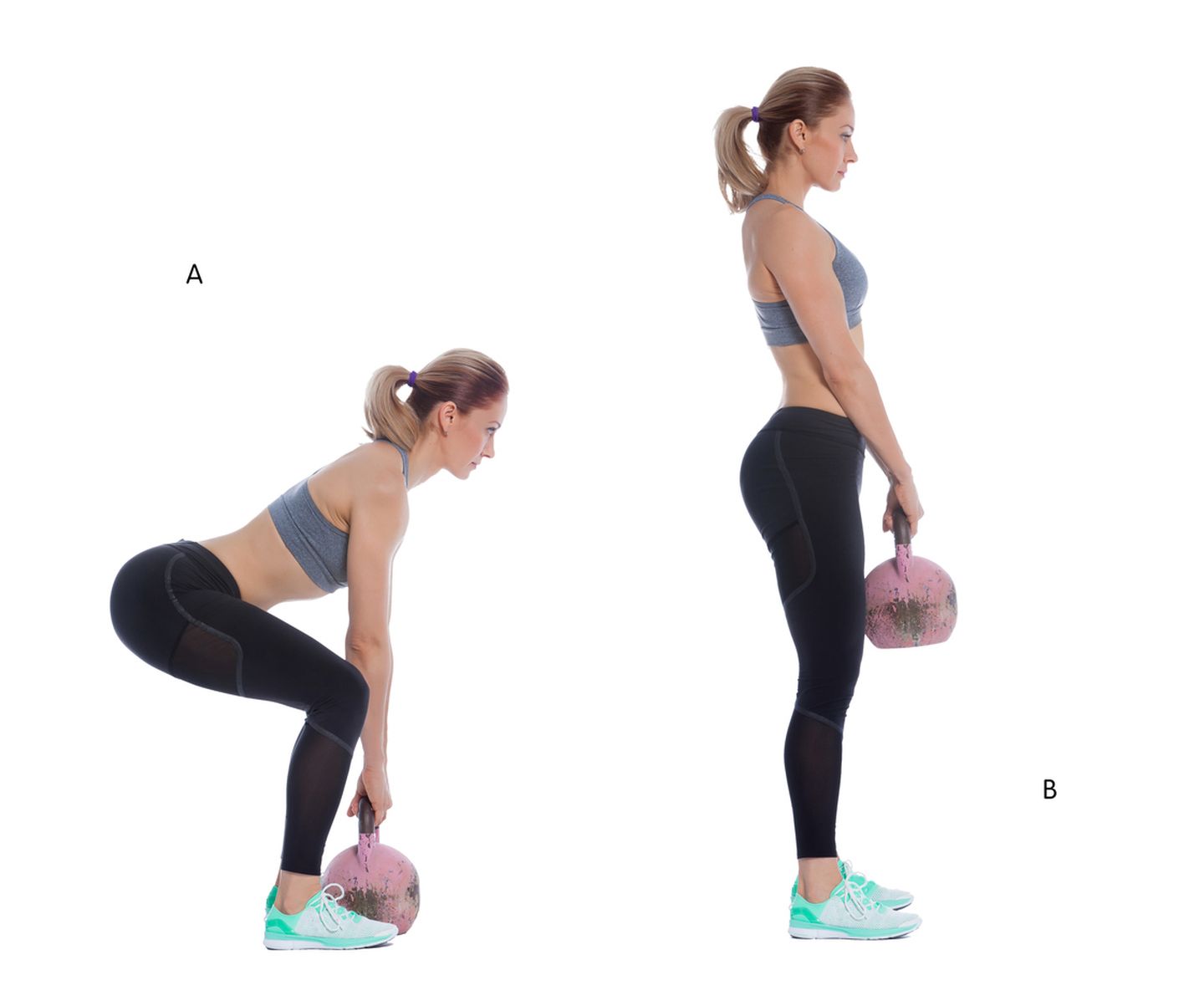
So, dead weight would be something that is an ecstatic inertia so it takes a little bit more force to move that, right? So it won’t move unless acted on by an outside force. So that initial inertia to pick something up is coming from our body so we have to overcome the gravity and the weight of the object. So, before you start picking heavy things up, it’s important to understand how to move and to move properly.
And so with the deadlift, the first thing that we usually teach people is hip hinging, because back pain always comes from spinal flexion if you see my videos spinal flexion would be here (please see the video) so people rounding at the back and picking something up, just doing that right there I start to feel my back slightly, so imagine if I put more force there. So watch the difference: I’m going to hip hinge so pushing my butt back; my back is completely straight and now if I go to pick something up I can lift it up. Now, obviously if it’s on the ground, I’m not going to go that far, but that’s why we are talking about this specific exercises. I’m going to push my butt back and then squat down and now if I pick something up, I’m in perfect position and I can pick it up.
Now, notice I am right in between my legs with the something that I’m picking up… the reason being, if I could’ve pick something up out here; whatever I am picking up out here, say it’s 40lbs out here, that’s creating about 400 lbs torque in my back, and that is where injuries occur so we always want to keep the center of mass right underneath the center of gravity because the muscle force, or the force of the weight is going to go straight down which is what our spine was intended for. So force going straight down on our spine won’t cause any damage. If we go in to spinal flexion and all of a sudden have force and torque in our back then we can cause trauma to the spine that is where injury begin.
So, always moving with the hips keeping the back completely straight. The stronger you are, the more you can actually move outside of that parameter. So, if you are really strong and you go to pick something up, you can start to flex a little bit at the spine because you have more core stabilisation and the spine is more stable, but first thing’s first, is here: so most people can start out with their arms out to the side like this… what you are going to do is to push your butt back and just repeat pushing the butt back and focus on feeling your hamstrings. Push your butt back so you feel your hamstrings. We don’t want to see you coming forward, just coming to this position and then on the way up we are going to think about using the muscles on the lower back and the glutes to stand up. So forward and backwards and repeat.
And once you get this movement down, then we can start to use something like a kettlebell. Preferably I’d like to use a barbell because the barbell keeps your shoulders back more with the bar but say you want to pick something up like a kettlebell here, we are going to push out butt back, back nice and straight, bend your knees now, keeping our spine in alignment, and then perfect form picking it up.
And what happens is, most people don’t prepare for picking things up and then they just allow the weight to move them. So they’re just go to pick things up their body is limping and then they go to pick something heavy up and yank. All that force goes straight to the back and creates damage.
So working on the deadlift is going to be number 1 important thing. Remember first thing is hip hinging, keeping the back straight, if we need to go lower we start to bend the knees always keeping the back straight and then back up. And this is why the squat pattern is extremely valuable and important, because they are all synergistic and they are all work together.
Ian Hart is a Body-Mind Transformation expert, the creator of EarthFIT Training Systems, co-creator of BACK PAIN RELIEF4LIFE, and founder of BEAUFORTPERSONALTRAINING.COM and MYBACKPAINCOACH.COM. Ian and his team help people get into optimal shape in the safest, fastest and most effective way possible, using cutting edge science.
Beaufort Personal Training: Shoulder Press
Beaufort Personal Training: Shoulder Press
This exercise is typically where I find people to be the weakest mostly because we are not doing this (arms up and down) all day. The only time that we are reaching for anything like that is maybe when we travel when we put our luggage up or when we reach for a cup, but these muscles are extremely important. There is a lot going around the shoulders and this is basically one that we want to focus on, because when we do need them it is important to have structure and stabilisation around this joints.
When people get older they start to have issues with the joints, when things get inflamed there’s a lot of muscles that cross, one muscle gets inflamed it creates a whole fire going on in the shoulder.
So this is a very simple exercise, the main thing here is to not have any force on the lower back. A lot of people pick up too heavy weights and then they start pressing, they arch their back putting a lot of force on the lower back. So simple things – knees bent slightly, hips back, back straight and then we are just going to shoulder press using just using our shoulders and again we can do it in numerous different ways (please see the video):
- One would be pressing straight up with the weights facing out.
- Another way would be here, pressing up and clicking together.
- Another one would be coming from here and then up and out.
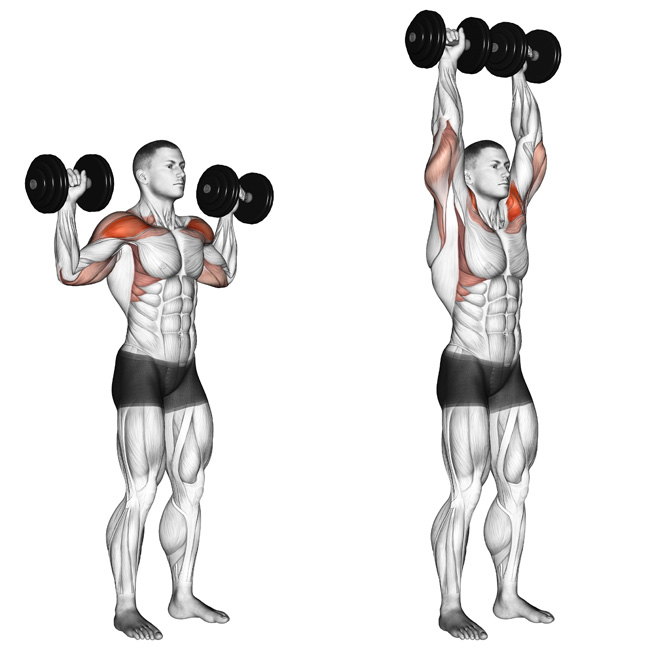
And so, you get the point, shoulder press is another one of those exercises that we would want to do to strengthen the overall body and to hit every aspect of the body that we might use out in real life, because essentially that is what we are training for, training to do things in life better, more efficiently, feel better about it, and stay injury free.
So, there you go with the shoulder press. I hope that helps, any comments or questions go ahead leave it below.
Ian Hart is a Body-Mind Transformation expert, the creator of EarthFIT Training Systems, co-creator of BACK PAIN RELIEF4LIFE, and founder of BEAUFORTPERSONALTRAINING.COM and MYBACKPAINCOACH.COM. Ian and his team help people get into optimal shape in the safest, fastest and most effective way possible, using cutting edge science.
Keeping Oneself Motivated to Go to the Gym
When you first make the commitment to start going to the gym, it seems like it should be an easy task. However, it only takes a few distractions before life starts to get in the way. It’s tempting to spend that extra hour sleeping, or catching up on your favorite show, or meeting friends for a drink after work. And when you’re not seeing the results you had hoped for, it certainly can feel like you might as well throw in the towel. If other people can do it, why can’t you?
Luckily, there are some quick, easy habits you can get into to maintain that drive to stay active, day after day. If you’re looking to keep yourself motivated to go to the gym, try incorporating some of these tips – you might find the encouragement you need to stay on track and achieve your fitness goals.
- Track your progress.
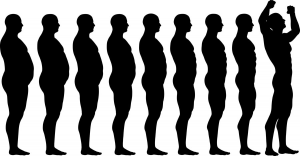
Whether you decide to invest in a smart watch, use an app on your phone, or just log each workout on your calendar, keeping track of your exercise gives you the chance to see improvements that might not show up on the scale. Maybe you can do more reps of each exercise, or you’re putting more miles on the treadmill in less time – celebrating these small victories is a great way to stay on track.
If you’re comfortable with it and you have a supportive network, share your progress on social media for even more encouragement and motivation.
- Exercise with friends.
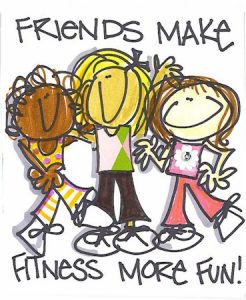
You can take that idea a step further and find yourself a group of friends who are willing to hold you accountable for your fitness goals. Either recruit members of your family or friend network to hit the gym with you, or reach out to someone who seems to share your interest in health – maybe at a spin or yoga class.
If you can make your daily stop at the gym into a social outing where you can reconnect with friends or loved ones, you’ll find yourself looking forward to your workouts. And not only will you be building muscle – you’ll be building relationships.
- Convenience is key.
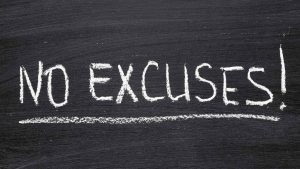
The more excuses you can find to get out the gym, the easier it gets to skip your workout each day. Maybe you only have one pair of jogging shorts, or you keep your gym bag tucked in the back of your closet – whatever it is, you’ll find a way to use it to get out of hitting the gym. Get yourself enough workout clothes to last the week without having to do laundry, and keep all your equipment within view.
If you can make going to the gym an easy part of your day – and one that’s hard to ignore – you’ll be much more motivated to keep it up.
- Build a routine.
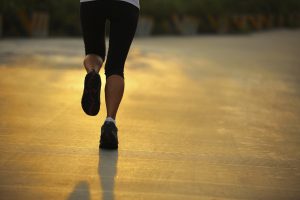
For working out to become a habit, you need to make going to the gym and being active a normal part of your daily life. Not only should you schedule a time to hit the gym each day, you should find other ways to incorporate activity into your routine – take the stairs, walk around your office building during breaks, and park further away from the store when you pick up groceries.
The more ways you can make fitness a part of your routine, the more natural it will feel to spend that hour at the gym, every single day.
- Treat yourself.
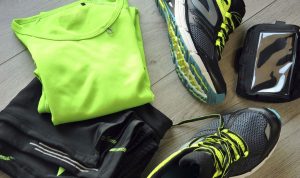
Set realistic, achievable fitness goals – and don’t be afraid to reward yourself when you reach them. However, this doesn’t mean splurging on a big meal that’s going to undo all your hard work. Find treats that don’t involve food, like buying yourself a new pair of running shoes, getting yourself a massage, or take a day off work to spend some time doing your favorite hobby, guilt-free.
Whatever it is, let the promise of the next reward encourage you to work even harder at your next set of goals.
Hopefully, making some of these changes will make it easier for you to get in gear and keep yourself motivated to hit the gym. You can keep this list bookmarked or even printed out in a spot where you’ll see it regularly, to stay focused and working toward looking and feeling your best. Your health and fitness goals are within your reach – just keep that motivation up!
This article was written by Jon Reyes from Steam Shower Store. He has over 10 years’ experience in writing health related topics and specializes in the health benefits of saunas and hydrotherapy.
EarthFIT Training and Supercompensation
EarthFIT Training and Supercompensation
“Hey! What’s going on? It’s Ian Hart here with EarthFIT Training and I get asked often why is our training different, how come we get better results in training, etc.. And so, before you can get into that I explain to people how training works in a broad sense, in a general sense. I’m going to explain to you in a minute here a supercompensation model that will help you understand how you get results in training in a very basic, and simplistic way. And so let’s get into it…
When someone comes in for an assessment I test their base level of fitness and let’s say this is over a week. And so when someone comes in and they’re training I test their base level of fitness, we’re seeing where they’re currently at, at their fitness level. Everybody’s at different fitness levels and when I train them typically what happens, and this is what is supposed to happen, is they fatigue the body, they lose ATP and glycogen – that’s the energy in the muscle in the body, their nervous system gets fatigue, their immune system gets fatigue. So as they’re training, we’re fatiguing the body. And the changes don’t occur to the body until they go home, they eat, they sleep, they drink water, they recover and what happens is the body recovers at a better state, and the body has amazing ability to adapt to whatever stress you are putting on it and it recovers in the instance that the stress might occur so it’s comparing for the next time that that might occur and that’s what is called supercompensation. And you have to train in this period in a progressive scientific way again to see your base level improved, and that’s why a minimum of 2x a week in a progressive scientific way is needed to see your base level improve. And when I’m talking about a progressive, scientific way, I’m talking about if you ran one day a week and you swam one day a week you wouldn’t get better at either. You have to run at least 2x a week.
The real scientific results and studies show that 3x a week is really necessary to improve your cardiovascular. But let’s say it was 2x a week where you ran a mile, the second time that week you either have to run the mile faster to get results or you have to run a little bit longer distance, right? or maybe let’s say you run in a slight incline. There’s got to be some variable change and that’s a progression. So that’s 2x a week. 3x a week you see about 30% more results than 2 x a week, 4x a week we see about 25% more than 3x a week and then if you train too hard, too much, too often in the long term typically what happens is we see overtraining and that is a detriment to your training as well. We don’t want that to happen.
And so with our training what we did is we took all the years of knowledge and combine, we took the best of what we saw and combine in one training – strength, endurance, cardio, flexibility, mobility, stability. It has strength, conditioning and those mobility aspects of a training which helps people to get results in the safest, fastest, and most effective way all backed by science so this gives you an insight as to how training works and there you have it. I hope this is helpful. Have a great day! Ian Hart from EarthFIT Training.”
- 1
- 2
- 3
- …
- 21
- Next Page »


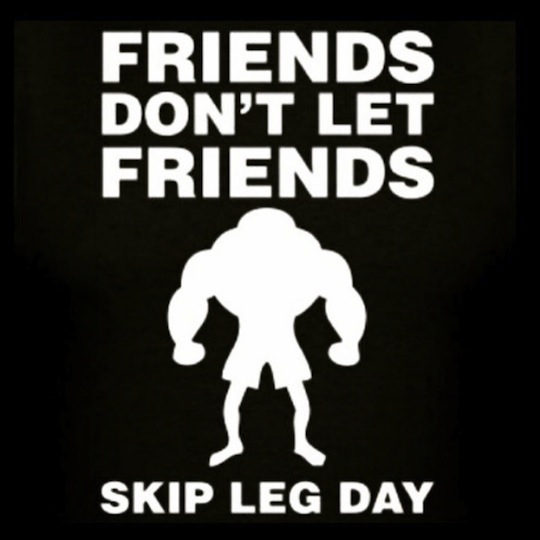









 YES! Contact me today to schedule a FREE no obligation consultation and trial workout.
YES! Contact me today to schedule a FREE no obligation consultation and trial workout.